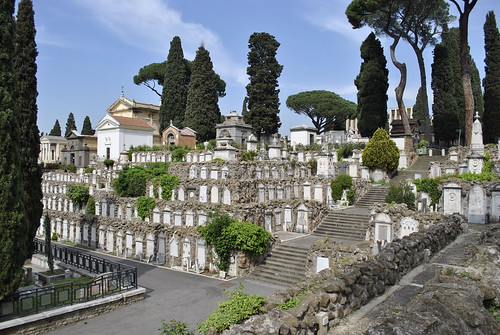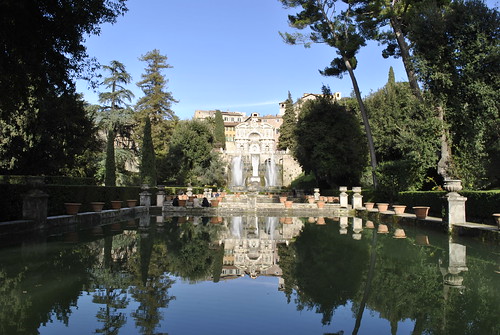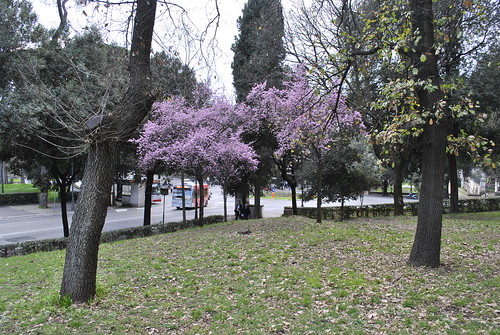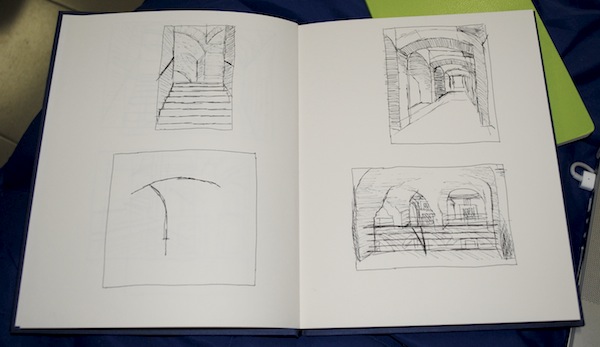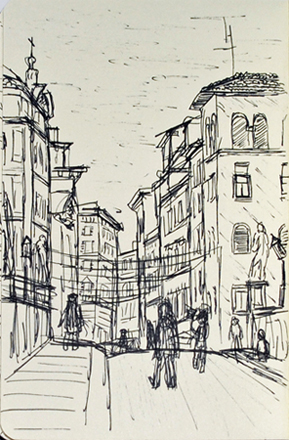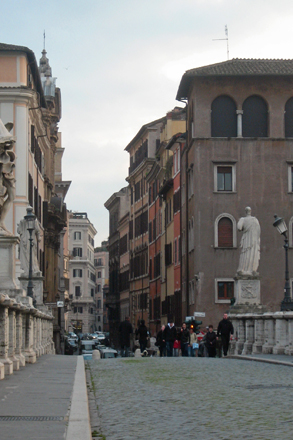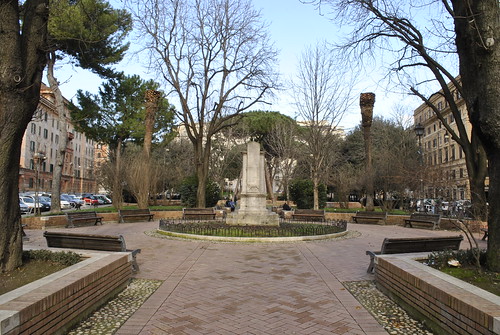
It was a delightful sunny Saturday afternoon in Rome, following a bit of a dreary, but relatively warm morning. After lunch my friend Jenna and I decided to enjoy the nice weather with gelato in a park. We went to one of my favorite parks I’ve seen so far, Piazza di Santa Maria Liberatrice in the Testaccio neighborhood just across the river to the south of Trastevere. The neighborhood is relatively small, sandwiched between the Tiber to the west, the Aventine Hill to the east and Monte Testaccio (Rome’s ancient Mount Trashmore) and old industry to the south. The area was sparsely populated with poor rural settlements before the mid to late 19th century when it was developed for worker housing for the industries nearby. It is one of the few cases of planned urbanization in Rome.
Laid out in a grid system, the neighborhood has a sense of continuation within and with the rest of the city, despite actually being somewhat tucked away. The regular streets disguise the neighborhood’s small size, giving a sense it could continue endlessly. It is characterized mostly by 6-8 story apartment buildings with sidewalk level shops, a market building, one large early 20th century church Santa Maria Liberatrice, and of course its associated piazza.
Piazza di Santa Maria Liberatrice is really more of a park compared to a typical Rome piazza. It is two blocks long and triangular shaped with a large playground at the wide end and a large open plaza in the center that flows into a brick pathway lined with benches leading to the narrow end near the church. The entire piazza is filled with trees and areas of green. The few actual grassy areas are separated by small grade changes with brick retaining walls and benches, discouraging walking there, so they have actually been maintained pretty well compared to most places with grass in the city. The abundance of trees and breaking up the piazza with different elements create several smaller spaces instead of one single open space which is more typical of Roman piazzas. This makes the piazza much more versatile and useful for more and different people. The scale and aesthetic of the buildings surrounding the piazza provide a well defined edge around the urban space.
After we got our gelato from a place at the corner, we took a bench in a nook between the playground and the larger central plaza. The playground was very active today with several children and their parents out enjoying the nice weather. Across from us three old men were sitting and shooting the breeze over a smoke. Soon several of the local pigeons congregated around us as we were finishing our cones. I laid a few crumbs down near me to see how close they would come. One little guy in particular was trying to get closer but kept beating around the bush. A small lonely sparrow came out from his hiding spot under a bush so I threw him (or her) a piece.
Later on a few boys started of a game of soccer in the central plaza space – the biggest kid as the goalie. Meanwhile the old men went on their way and a new crew took their place. The mini world cup was a fierce match but all in good fun. When the ball went astray there was plenty of help getting it back. A middle aged man sitting on the bench next to us tossed it back first. Then a young father passing through with his daughter in an all-terrain stroller kicked it back to them. The next foul ball went high into the air right towards the new group of old guys. I can only imagine the brief terror those kids experienced as the ball went hurling through the air towards them. But the men shrugged it off and all was well. It was a captivating game that got everyone involved.
The interaction of different people, different generations, and different creatures makes visiting this park a wonderful experience. It is a park that encourage and facilities an endless number of activities through its design and amenities like the playground and ample sittable space. The different spaces within it are at a human scale, making them inviting and comfortable to be in. The buildings and church that frame the park give it context and a sense of place, making it special and unique to that community. Piazza di Santa Maria Liberatrice is everything a great urban neighborhood park should be – and a great place to enjoy the day with some gelato.

